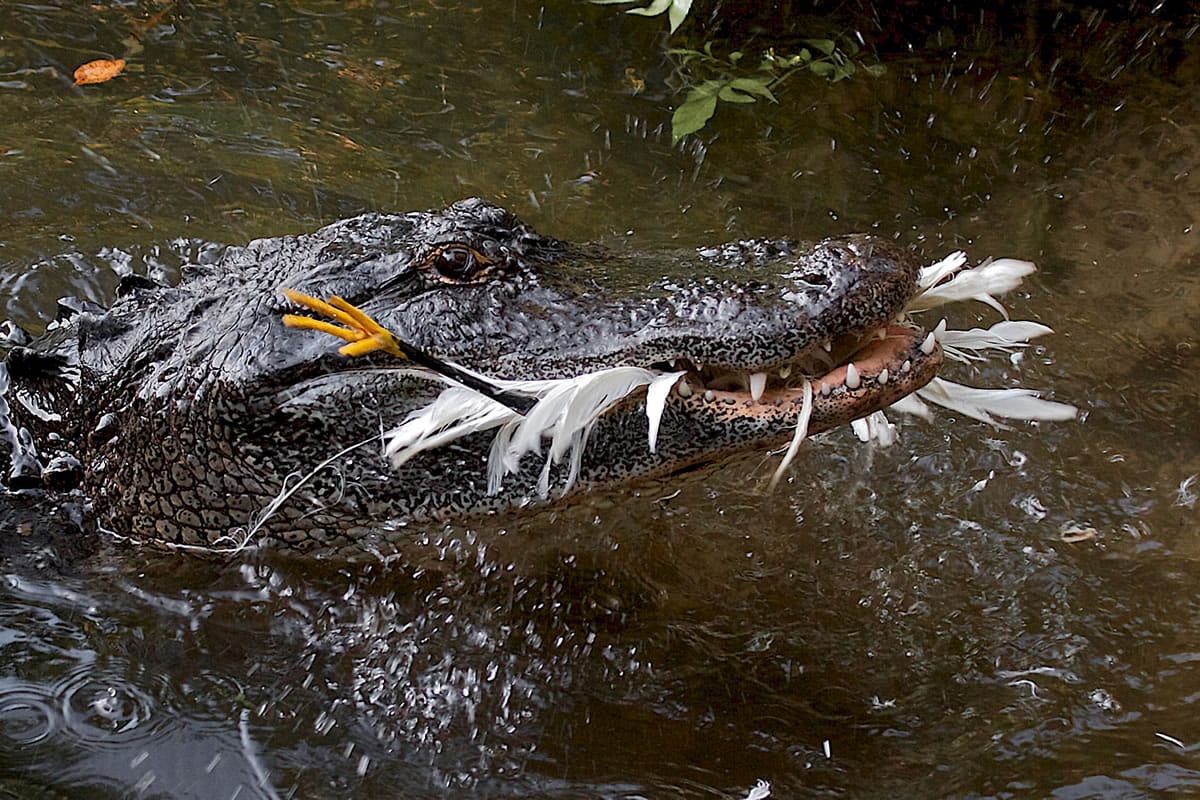It’s springtime at Louisiana’s Lake Martin. The air is filled with the chattering of wading birds in the trees that ring the shoreline as they build their nests and prepare to lay eggs. A submerged alligator’s body just barely breaches the surface. A snowy egret spots a good-looking stick floating on the water. It would make a fine addition to her nest, so she swoops to snatch it up. Bad idea. The stick was perfectly perched on the alligator’s snout, inches from his teeth. With a well-timed snap of his jaws, the alligator makes quick work of the bird and enjoys his lunch, beak and feathers and all.
Jane Goodall first described chimpanzees’ using sticks as tools in 1964. Prior to that, it had been thought that tool use was exclusive to our species. In the decades since, the club of tool-users has expanded to include other big-brained mammals such as apes, elephants and dolphins, such clever birds as crows, ravens and jays, and even the octopus. And crocodilians, animals once seen as stupid, may use tools, too.
Vladimir Dinets, an assistant professor of psychology at the University of Tennessee and an author of a new study describing this hunting technique, first saw a hint that crocodilians — which include crocodiles, alligators, and caimans — might use sticks as a lure in 2007. Doing research in India, he watched as a mugger crocodile lay motionless in shallow water with an array of sticks and twigs laid across its snout. When an egret flew by to grab the stick, the crocodile snapped and the bird narrowly escaped. Dinets had heard of similar crafty behavior at Florida’s St. Augustine Alligator Farm Zoo.
But these were just isolated anecdotes, not subject to the rigors of scientific observation. “We needed to prove convincingly that the use of sticks was intentional,” Dinets said. He started spending weekends at two Louisiana lakes and discovered that the use of sticks as bait by wild alligators there was not haphazard. Alligators living beneath bird rookeries used them; others didn’t. Because the trees near the lakes don’t regularly shed branches or twigs, this suggests that the gators sought sticks to use.



